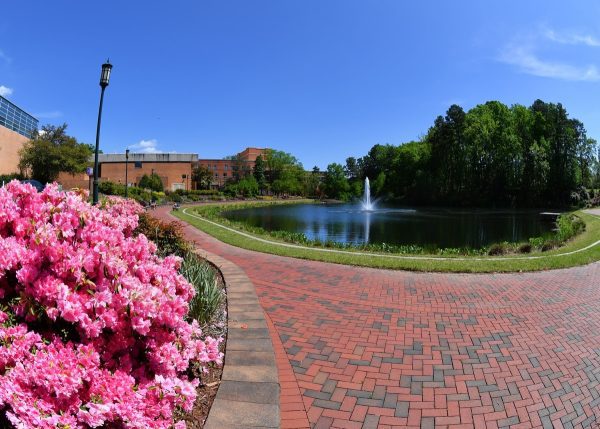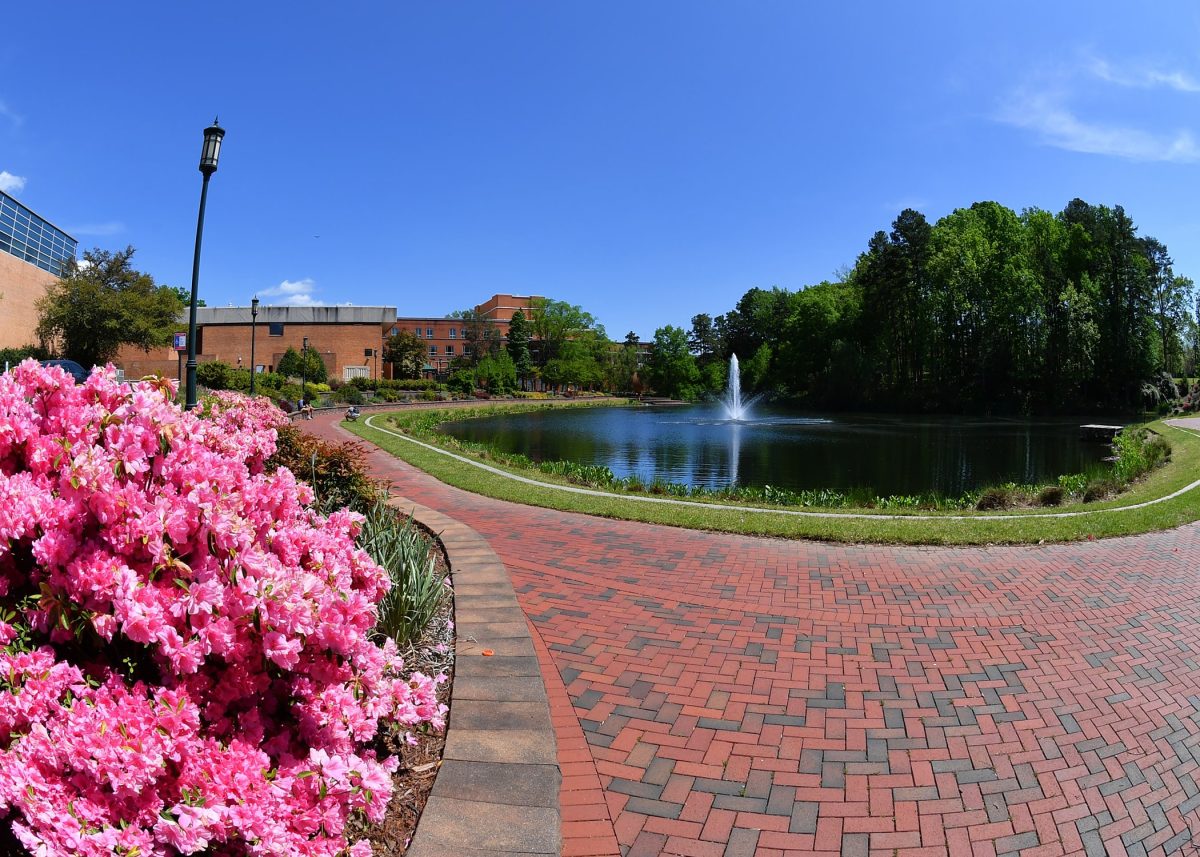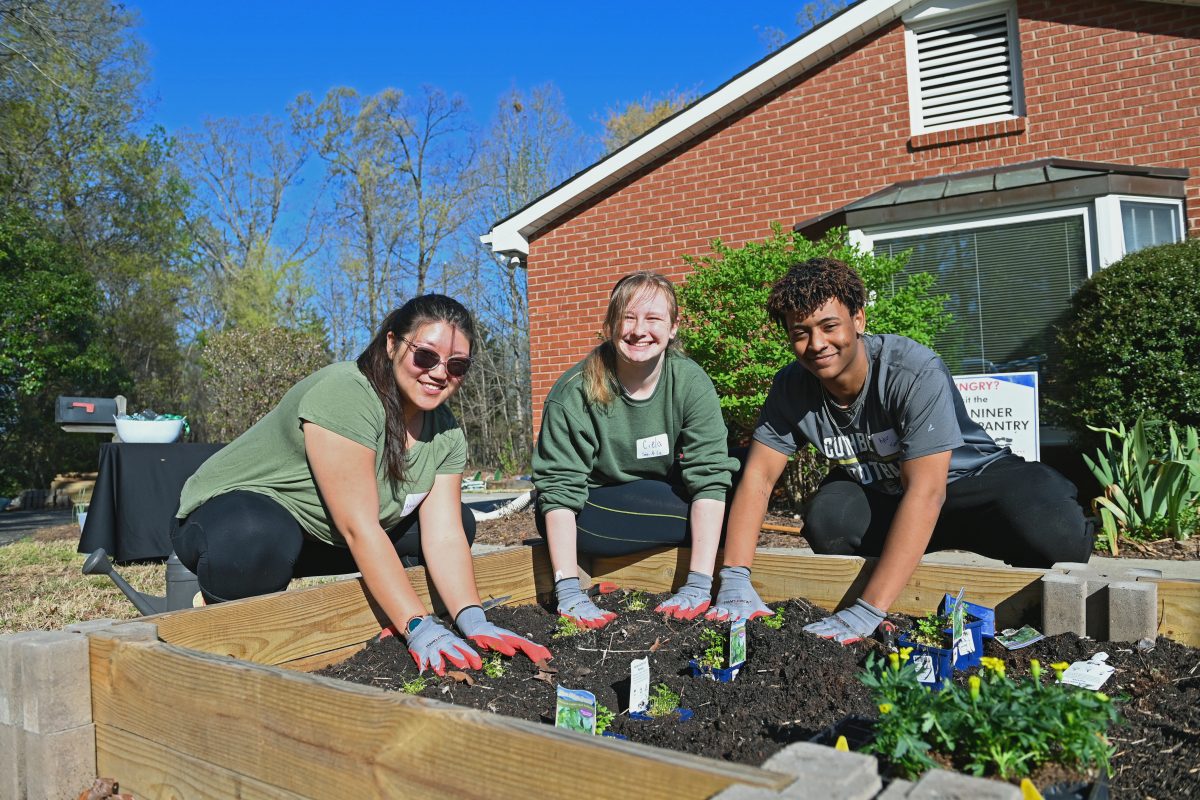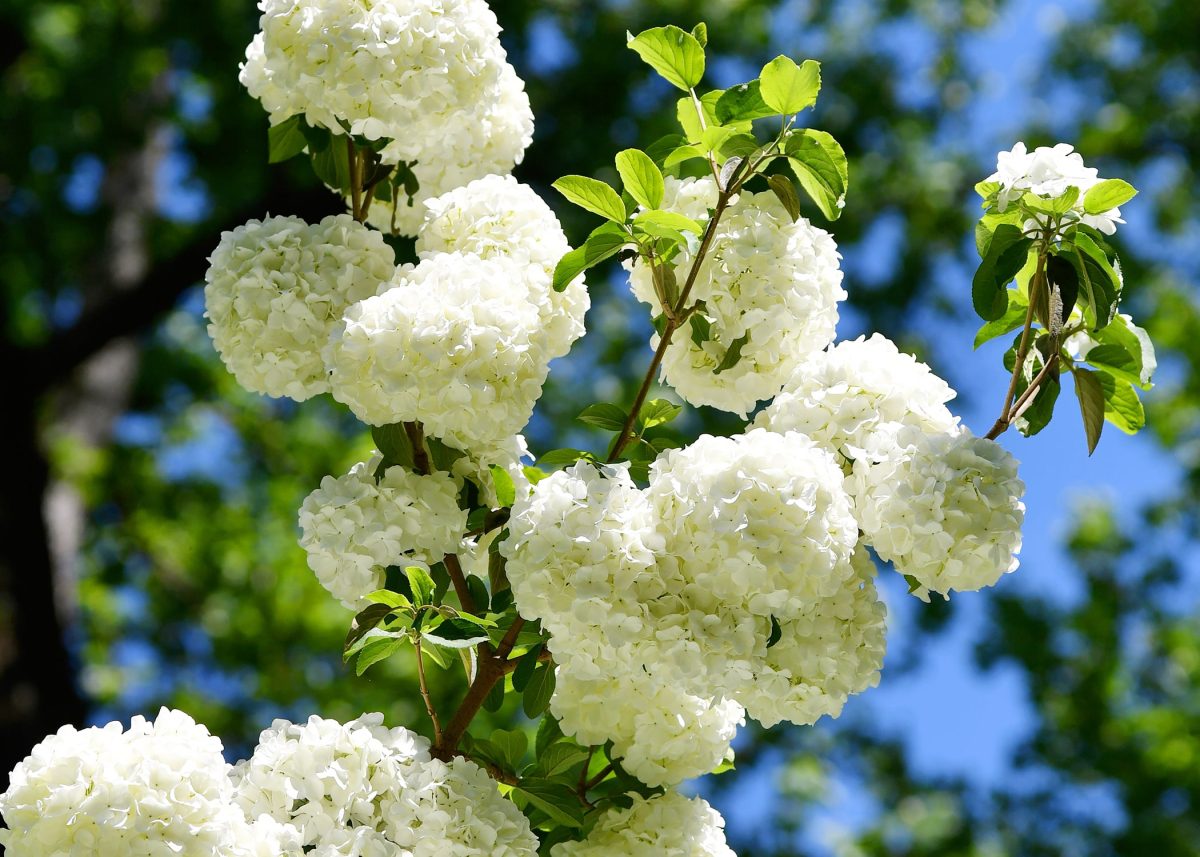Gardening Tips

As the weather gets warmer, many choose to spend their time outside — often gardening and doing yard work. If this is you, don’t forget your sunscreen and consider these tips for lawn care, planting and landscaping provided by staff from the Grounds unit and Office of Sustainability in Facilities Management.
Lawn-care tips:
Irrigation:
- Do: Irrigation should occur in the early morning, typically 5 a.m. Also, you should irrigate with longer run times on fewer days to achieve deeper root watering.
- Don’t: A common mistake homeowners make is irrigating their lawn in the evening. This causes water to stay on the leaf overnight, and with temps above 55 degrees at night, this could cause fungus to grow, especially with cool season grass like tall fescue.
Mowing:
- Do:
- The best time to mow is mid-morning after a rainfall or the day after irrigation day, but not when the grass is soaking wet.
- Always change the direction of mowing by 45 degrees. This will help reduce rutting.
- Don’t:
- Avoid mowing when it is very hot outside or right after applying fertilizer. This will stress the plant even more and may not allow it to recover from mowing.
- Cool season grass (fescue)
- Mow no lower than three-and-a-half inches. Four to five inches would be best to naturally avoid weeds and retain moisture.
- Aeration and overseeding should be done in the fall when the night temps get cooler.
- Warm season grass (Bermuda)
- Mow at two-inch height. If your lawn is uneven or bumpy, raise up the cutting height to two-and-a-half inches to avoid scalping.
- Fertilize and aerate in the hot summer months to promote growth, spreading and filling in sparse areas.
Sustainability tip: Most lawns do not have a direct purpose, and the upkeep is not sustainable. Consider other options, such as retaining forested land and minimizing large grassy areas.
Garden and flower bed tips:
 Watering:
Watering:
- It is best to water your garden in the early morning or early evening using a drip line hose set at the base of the plants, or to hand water at the base of the plant. If you get leaves wet on a hot summer day, water droplets can act as a magnifying glass and burn your plants’ leaves.
Planting crops and flowers:
- Planting is typically done in the spring and fall for flower beds and gardens. The Almanac provides a planting calendar for the Charlotte area.
- In our region, it is best to delay planting flowers until at least after April 15 when the threat of frost has typically passed. Many vegetables can be planted prior to this date, as shown in the Almanac’s calendar.
- Fall planting can be done when you desire.
- Perennials can be planted anytime.
- Most trees and shrubs should be planted in the fall.
- Plant these together:
- The three sisters — beans, corn and squash. Corn provides a structure for the bean vines to climb so that they are not out-competed by the large squash leaves and vines. Beans also provide nitrogen to fertilize the soil and stabilize the corn during heavy winds. The large leaves of the squash plants shade the soil which helps to retain moisture.
- Plant cabbages with beets, celery, lettuce, spinach and onions.
- Plant carrots with beans, lettuce, onions, peas, peppers and tomatoes.
- This companion planting guide may be useful for additional tips.
- Avoid planting these together:
- Mint and onions where asparagus is growing.
- Pole beans and mustard near beets.
- Anise and dill near carrots.
- Any member of the cabbage family near strawberries.
- Tomatoes near potatoes.
 Pruning:
Pruning:
- A loose rule for flowering shrubs is to prune after they bloom.
- Azaleas should be pruned after they bloom.
- Butterfly bushes should be pruned in the spring as new leaves emerge.
- Roses should be pruned in early spring after hard frosts are over.
- Hydrangeas that bloom on old wood (last year’s growth) should be pruned right after they bloom, and no later than July.
- Hydrangeas that bloom on new wood can be pruned any time of year except summer.
Sustainability tip: Landscaping and vegetation should fulfill a human need (i.e. growing food to consume or bringing joy through beautification) and fit the local ecosystem.
Landscaping and pest control tips:
 Mulching:
Mulching:
- Benefits: Mulch benefits plants by reducing soil temperatures, keeping moisture in the soil, providing nutrients as it breaks down and helping reduce grasses and weeds from invading the area.
- When to spread: People typically spread mulch in the spring and fall when they are rotating their gardens or planting beds, but it can be applied at any time.
- Types of mulch: The type of mulch used is a personal preference, but there are considerations to be aware of before choosing.
- Cedar mulch has natural insect repellent properties, but it is typically a costly option.
- Hay mulch is a great option for vegetable gardens.
- Pine straw and bark chips/shavings can attract unwanted insects around the house, so use these away from structures if you must.
Pest control:
- Always properly identify your pest before you attempt any type of control, especially when using pesticides.
- After you identify your pest, look up ways to organically control them before using pesticides.
- If you do decide to use pesticides, always thoroughly read the label and use the lowest recommended rate.
Special thanks to the following contributors: Jon Canapino, Bart Davis, Mike Lizotte, Dennis Lubert and John Surace.

 Watering:
Watering:  Pruning:
Pruning: Mulching:
Mulching: